Best War Movies Of All Time
- Oops!Something went wrong.Please try again later.
- Oops!Something went wrong.Please try again later.
- Oops!Something went wrong.Please try again later.
- Oops!Something went wrong.Please try again later.
- Oops!Something went wrong.Please try again later.
- Oops!Something went wrong.Please try again later.
- Oops!Something went wrong.Please try again later.
- Oops!Something went wrong.Please try again later.
- Oops!Something went wrong.Please try again later.

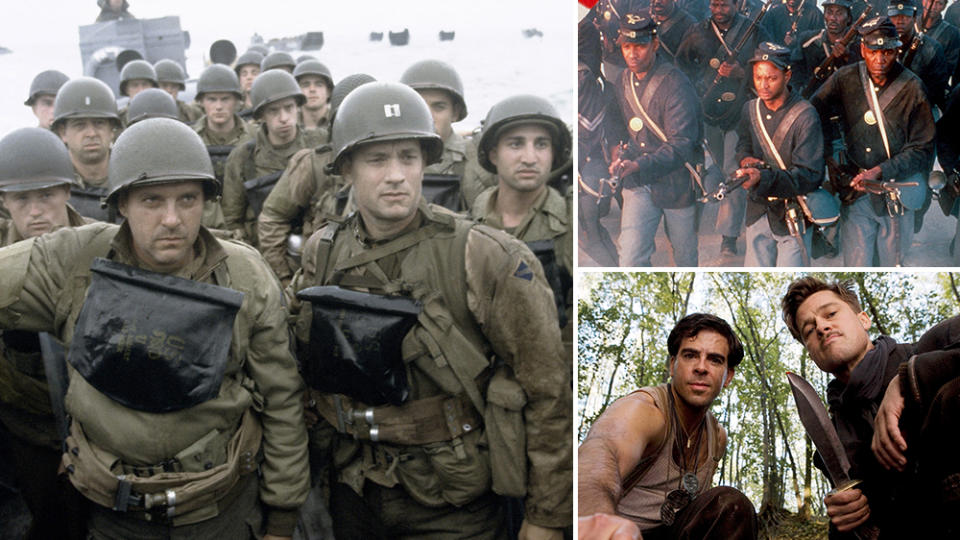
Twenty-five years ago, on July 24, 1998, “Saving Private Ryan” was released. It’s a movie that figures high on our list of the 30 Greatest War Films. Yet it’s worth noting just why Steven Spielberg’s wrenching combat masterpiece has earned such a singular place in the cinema of war. Many, if not most, of the greatest war films — like, for instance, “Paths of Glory” — are often characterized as “anti-war.” The reason is obvious: They’re message movies that depict the horrifying devastation of war, all as a way of saying, “The human race must figure out a way to stop this unfathomable cruelty.” You could say that’s the message embedded in every movie about the Vietnam War — the era when combat in film attained a new, searing, at times hallucinatory realism. The Vietnam movies were all about how cataclysmic and terrible and “insane” war could be.
More from Variety
Alan Ladd Jr., Who Greenlit 'Star Wars' and Produced 'Braveheart,' Dies at 84
Diane Kruger Reveals Tarantino Didn't Want Her to Audition for 'Basterds': 'He Didn't Believe in Me'
Yet “Saving Private Ryan,” which built on the dizzying, you-are-there battle-field authenticity that had been brought to the screen by Kubrick, Coppola, and Stone, made a statement that couldn’t be categorized as “anti-war.” That’s because it was about a war that needed to be fought. And this lent Spielberg’s film a singular and spectacular ambivalence. It showed war to be hell. But it also showed war to be a hell that was (sometimes) necessary.
Most of the films on our list contain indelible sequences of combat. “Saving Private Ryan,” for example, is just one film that show a great war movie is about the moral complexity at its heart: not just the depiction of war but the understanding of war in all its fear, horror, blood and compulsion, its violent pointlessness and also its need, at times, to exist.
Stalag 17 (1953)
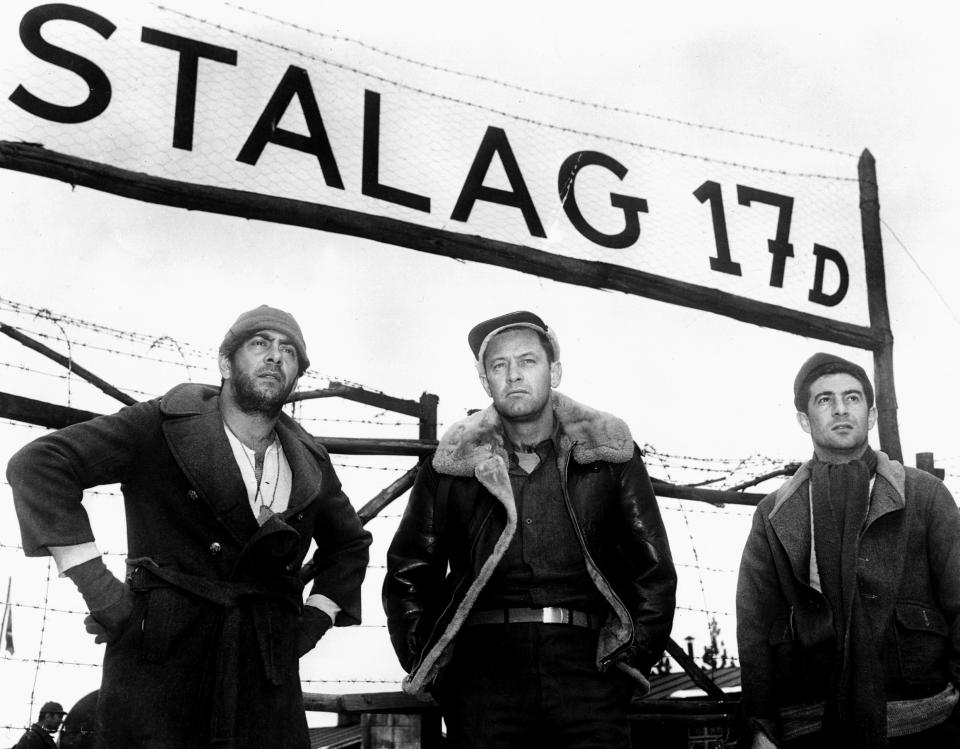
Director Billy Wilder expertly combines drama, violence and humor in “Stalag 17,” a 1953 classic about a prisoner-of-war camp in WWII. There’s an informant among the 630 sergeants captured by the Germans, which leads to the deaths of two would-be escapees. The men try to deduce who the rat is, while also keeping their sanity during the monotony of lock-up, and soon suspicion falls on William Holden’s J.J. Sefton, a clever loner. Holden won an Academy Award for lead actor for the role, and Wilder and supporting actor Willaim Strauss also picked up nominations. — Jordan Moreau
War and Peace (1966)
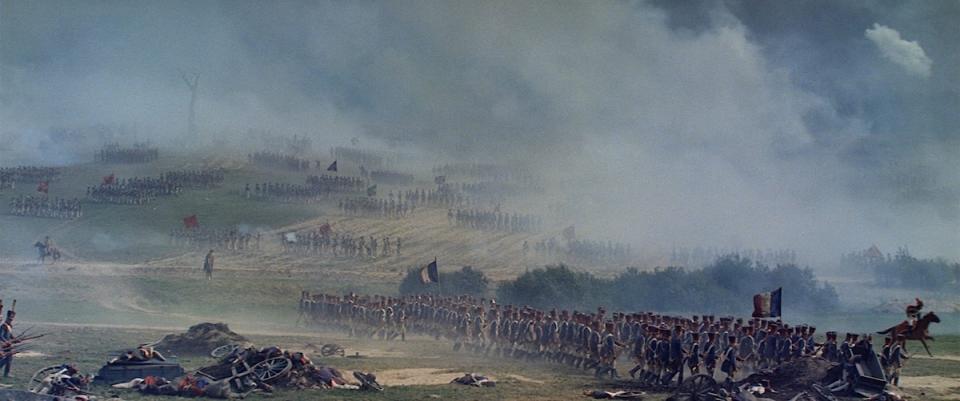
This masterful Napoleonic epic directed by Sergei Bondarchuk marked a watershed moment in the history of Soviet cinema, releasing in four installments between 1966 and 1967 after a production that spanned 6 years. As director — and one of the leads, playing Pierre Bezukhov — Bondarchuk commanded legions of actors to bring his vision of Leo Tolstoy’s 1867 novel to life, at one point orchestrating over 10,000 extras to recreate the Battle of Borodino. The film, which was one of the most expensive films made at the time, also shot in 70-mm instead of the standard 35-mm, a decision that Variety in 1965 called “brilliant.” Bondarchuk overcame casting difficulties and various filming disasters to craft a movie now remembered for its enormous ambition beyond what any audience member had witnessed before. His efforts were rewarded: “War and Peace” took home the Grand Prix at the Moscow International Film Festival, the Golden Globe for best foreign film and the Academy Award for best foreign language film. — Rachel Seo
The Big Parade (1925)
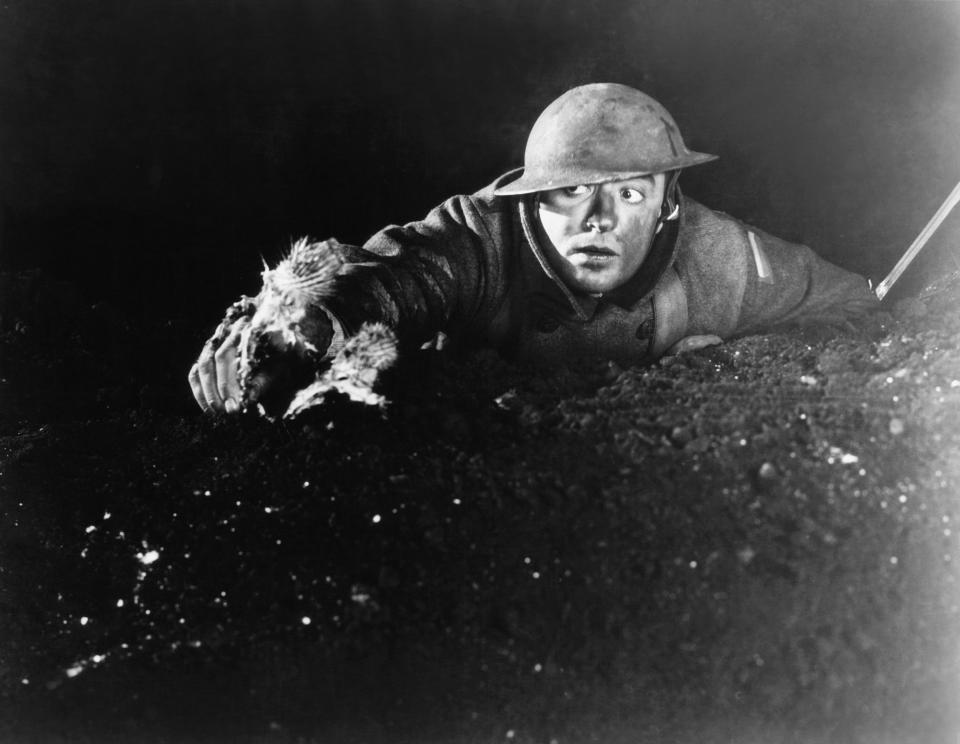
A greatly influential silent film in the war genre, “The Big Parade,” from director King Vidor, follows an American solider named James Apperson as he is sent to France to fight in World War I. While overseas, he falls in love with a French girl and faces head-on the horrors of trench warfare. The film, written by WWI veteran Laurence Stallings, was a commercial and critical success, setting a standard for war movies with its realistic portrayal of combat and immersive trench sequences. “The Big Parade” is not only a seminal work within its genre but an important touchstone for cinema itself. — Ethan Shanfeld
Braveheart (1995)
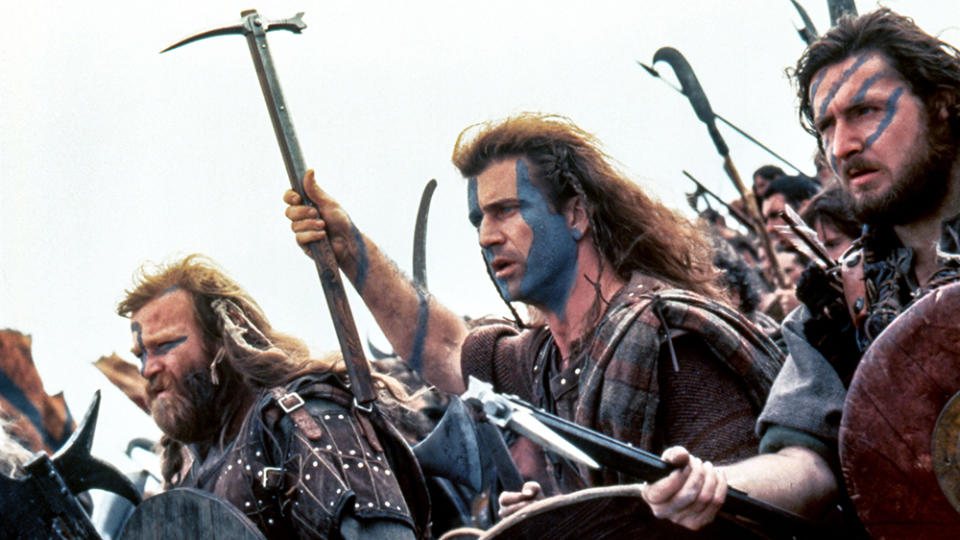
A triple- threat for Mel Gibson – he directed, produced and starred in the 1995 war epic — “Braveheart” follows 13th century Scottish warrior Sir William Wallace as he leads the fight for Scottish independence from England. Based on Blind Harry’s 15th century poem “The Actes and Deidis of the Illustre and Vallyeant Campioun Schir William Wallace,” the film also stars Sophie Marceau, Patrick McGoohan and Catherine McCormack. Though criticized for its historical inaccuracy and nearly three-hour runtime, the film has been long praised for its action spectacle, with Variety’s review calling it “the sort of massive vanity piece that would be easy to disparage if it didn’t essentially deliver.” And deliver it did, taking home five Oscars, including for best picture, director, cinematography, makeup and sound effects editing. — Ellise Shafer
Grave of the Fireflies (1987)
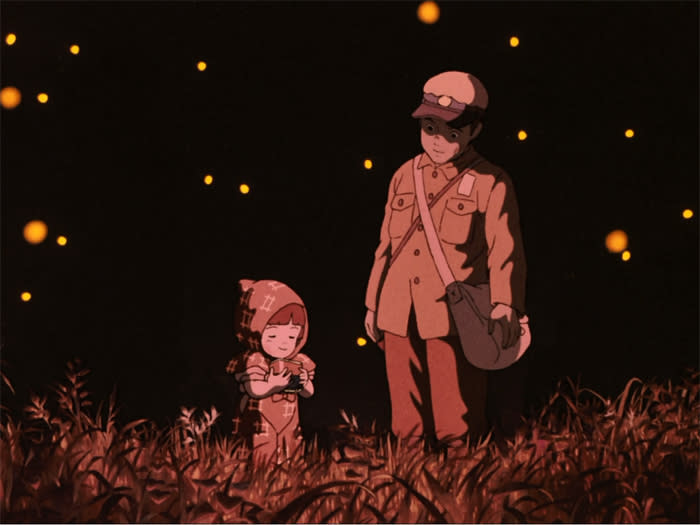
Animation is so often dismissed as a medium for children, and yet, Studio Ghibli’s devastating adaptation of the 1967 novel represents the artform’s unique potential to tackle subjects too grim for most audiences to handle via live-action — a lesson later applied to films such as “Waltz With Bashir” and “Funan.” Here, director Isao Takahata presents audiences with the Japanese side of a devastating war, observing the wrenching toll this conflict takes on two children, 14-year-old Seita and his 4-year-old sister Setsuke, who are orphaned during the U.S. fire-bombing of Kobe. Homeless and starving through impossible circumstances, Seita struggles to protect and distract his sister from the horrors that surround them. Though the ending is tragic, it’s the sparse moments of joy that stick with you. — Peter Debruge
Ashes and Diamonds (1958)
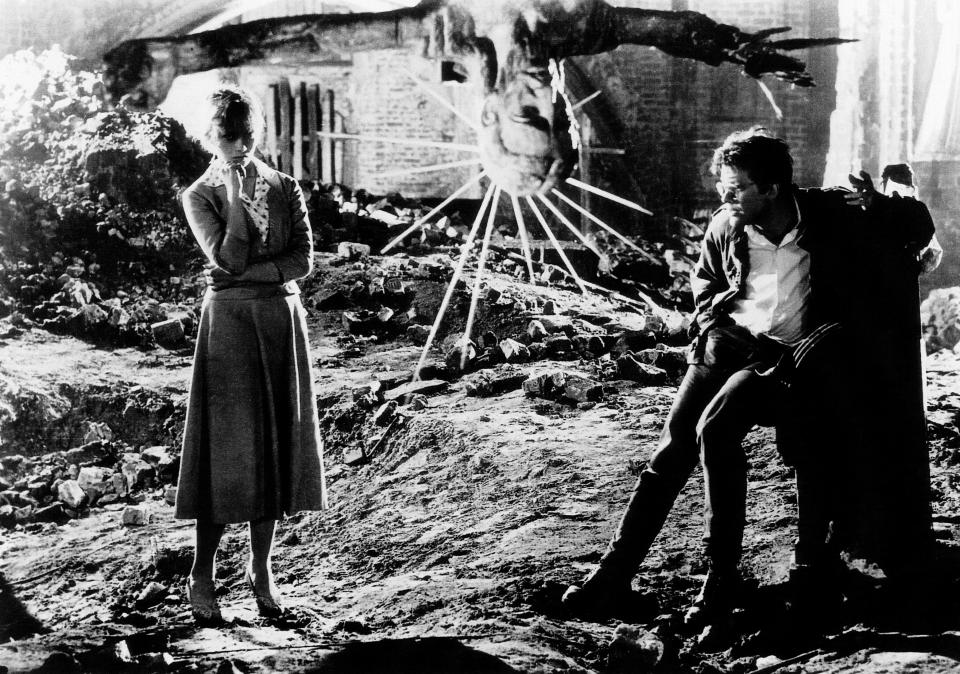
Serving as the final installment of director Andrzej Wadja’s war trilogy, “Ashes and Diamonds” follows an anti-Communist soldier who is ordered to kill a local secretary of the Polish Workers’ Party — a task he increasingly doubts is worth doing. The film, based on Jerzy Andrzejewski’s 1948 novel of the same name, explores the disillusionment and internal conflict harbored by individuals stuck in the volatile aftermath of World War II. It’s a grand-in-scale war film, but a character drama at heart. — Ethan Shanfeld
The Dirty Dozen (1967)
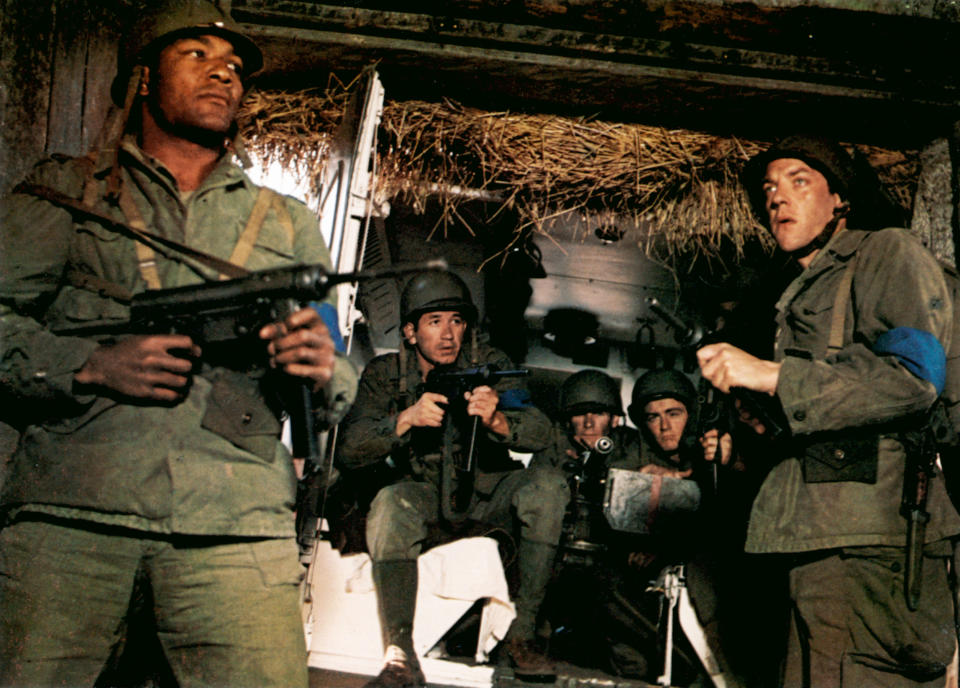
The definitive example of how an indelible war movie doesn’t always have to be “authentic.” Set in 1944, Robert Aldridge’s gritty high-end exploitation classic takes off from an irresistible meat-grinder premise: Lee Marvin, gritting his teeth as OSS officer John Reisman, is ordered to oversee a top-secret mission in which he’ll gather a dozen of the U.S. Army’s most irredeemable convicts — and whip them into an elite commando squad that will launch a kamikaze attack on a chateau full of Wehrmacht officers. (If any of the Americans survive, they’ll go free.) The actors (Jim Brown, Charles Bronson, John Cassavetes, Telly Savalas) inhabit their roles as if born to them. But even as we’re chortling at this nihilistic fantasy of macho bonding, the climactic attack jolts us into realizing how invested we’ve become in these scuzzball criminals. — Owen Gleiberman
City of Life and Death (2009)
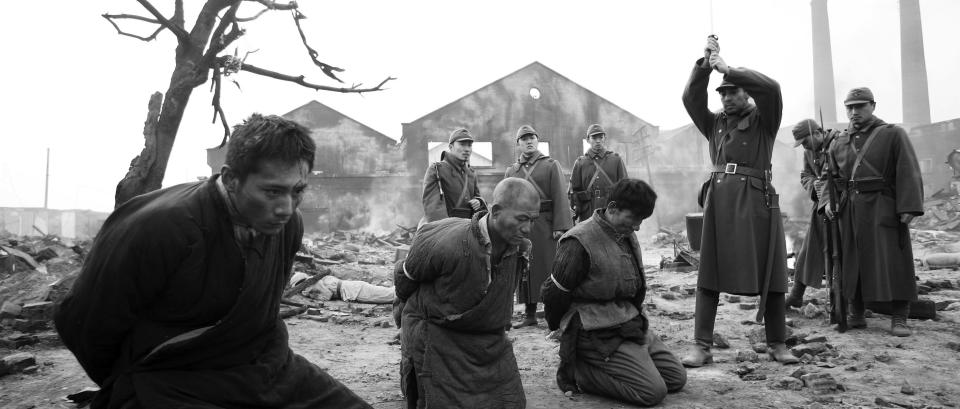
With their spectacular production values and armies of human extras, Chinese war movies (such as megahit “The Eight Hundred”) tend to look impressive, but often play like high-gloss propaganda exercises, à la Michael Bay’s “Pearl Harbor.” Chinese auteur Lu Chuan’s harrowing portrayal of the Rape of Nanjing marks an essential exception, re-creating one of the greatest atrocities perpetrated by the Japanese on China during World War II without resorting to melodramatic manipulation. The decision to shoot in black and white places the events in historical context, while his immersive style leaves audiences feeling shell-shocked and vulnerable as Lu follows multiple points of view, most notably that of a conflicted Japanese soldier. — Peter Debruge
They Were Expendable (1945)
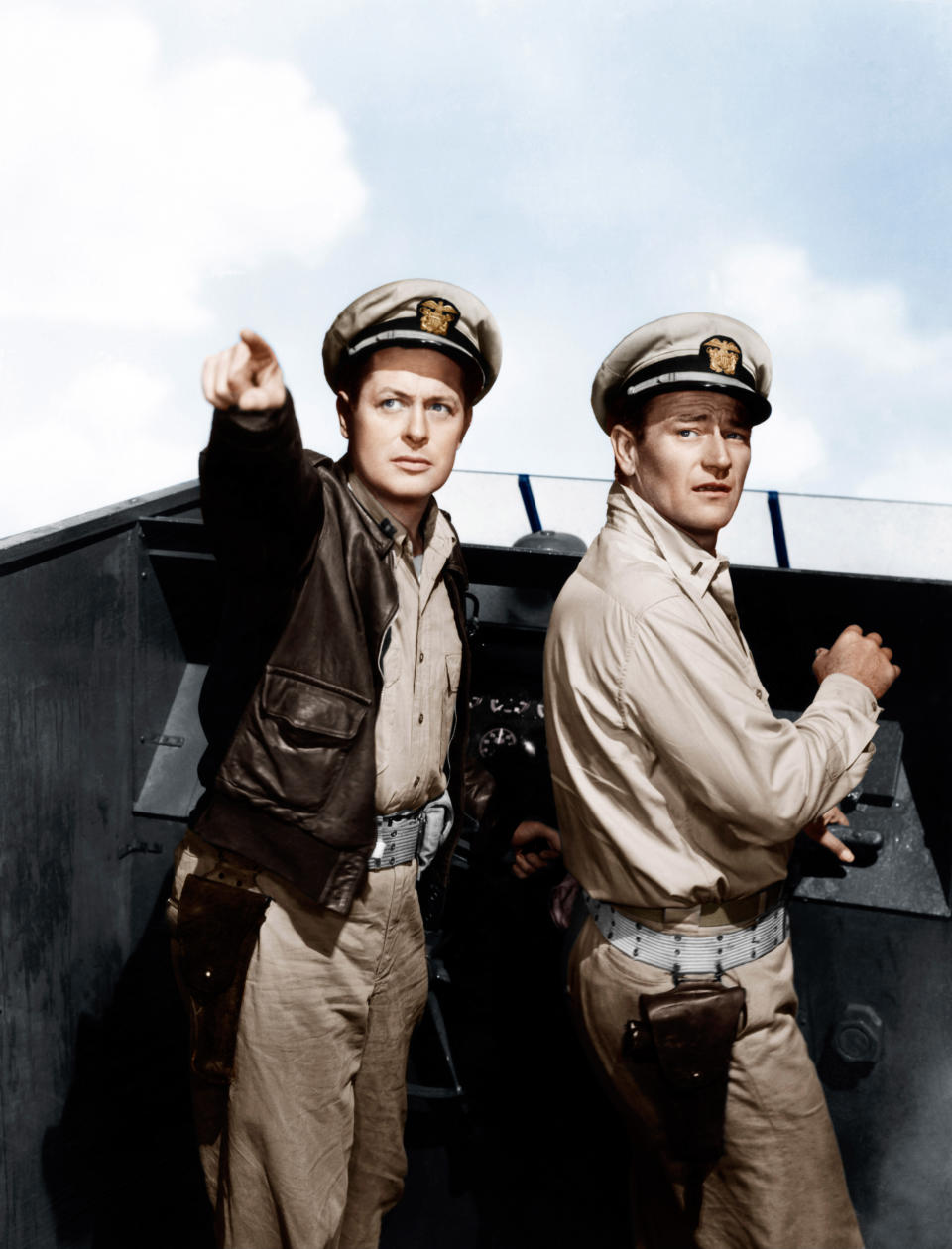
Directed by John Ford, 1945’s “They Were Expendable” stars Robert Montgomery and John Wayne as World War II lieutenants in command of an untested Navy squadron stationed in the Philippines. The film, which is based on William Lindsay White’s 1942 novel and loosely inspired by real events, chronicles the squadron’s efforts at staving off Japanese invasion during the Battle of the Philippines. A quintessential underdog story, “They Were Expendable” expertly captures the desperations and triumphs of battle, framing even the hope of a romance between Wayne’s character and Donna Reed’s Sandy Davyss within the ultimate futility of the war surrounding them. The movie garnered Oscar nominations for its special effects and sound design and was lauded in particular for its attention to detail in the naval combat scenes; Variety in 1945 called the battles “exceptionally well directed.” —Rachel Seo
Three Kings (1999)
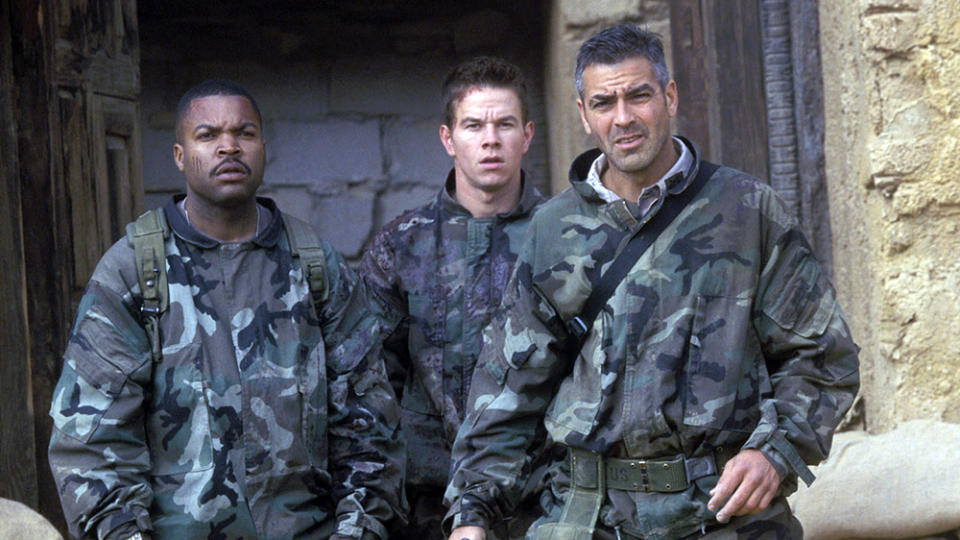
After launching his career with two screwball comedies, director David O. Russell exited the ’90s with this Desert Storm barnburner, starring George Clooney, Mark Wahlberg and Ice Cube as a ragtag military trio that discovers a stash of stolen gold. The film sobers into a more serious tone, but remains a blithe farce of Western imperialism at the height of its powers. The unhinged opportunism at play speaks for itself. — J. Kim Murphy
Fires on the Plain (1959)
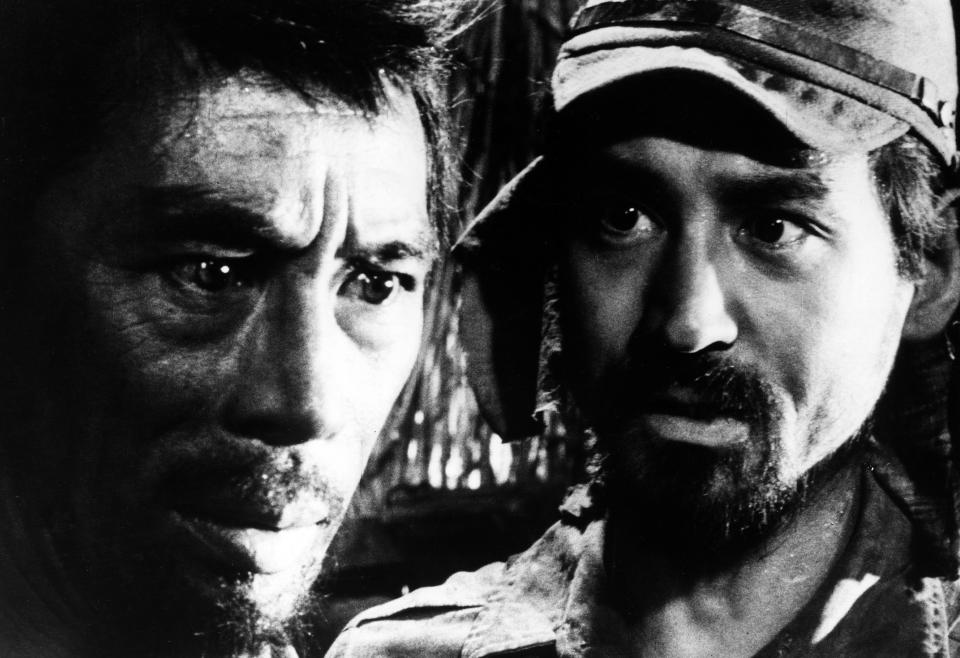
This 1959 Japanese war film by director Kon Ichikawa was originally criticized for its violence and morbid themes, but in the years since its release it’s become more highly regarded as a chilling, realistic depiction of war that roots itself under your skin. A Japanese soldier, stricken with tuberculosis near the end of WWII, is told to commit suicide via grenade if he can’t get admitted to a hospital. After the hospital is bombed, he flees and eventually witnesses the horrors of war, including death, murder and cannibalism. In his review, New York Times critic Bosley Crowther wrote “Never have I seen a more grisly and physically repulsive film than ‘Fires on the Plain,’” but critics have reversed course over the years and hailed its brutality. — Jordan Moreau
Inglourious Basterds (2009)
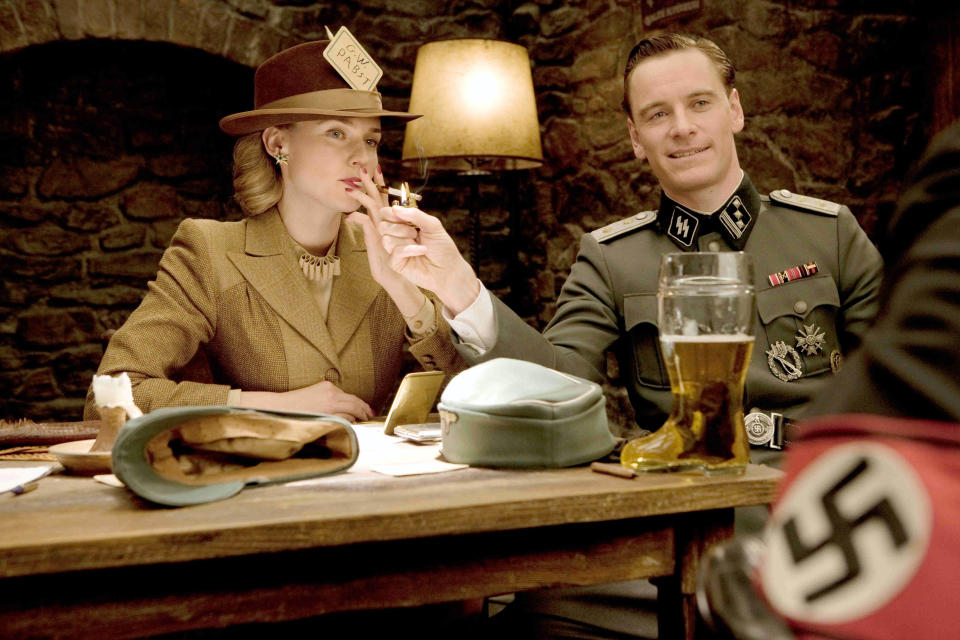
From its borderline scandalous opening monologue, in which Christoph Waltz’s German officer Hans Landa explains with impish “logic” why Jews are like rats, to its commandingly sly performance by Brad Pitt as good ol’ super-redneck U.S. Army Lieutenant Aldo Raine, from its glorious recontextualization of David Bowie’s “Cat People (Putting Out Fire)” to the wily intricacy with which it evokes ’60s Hollywood movies like “The Dirty Dozen” when Pitt and Eli Roth infiltrate a Nazi film premiere, Quentin Tarantino’s World War II epic is like a Hollywood looking glass you pass through: a movie about war as seen through the movies. Every moment in it is at once confected and bracing, sheer synthetic pulp and pure suspense poetry. — Owen Gleiberman
Rome, Open City (1945)
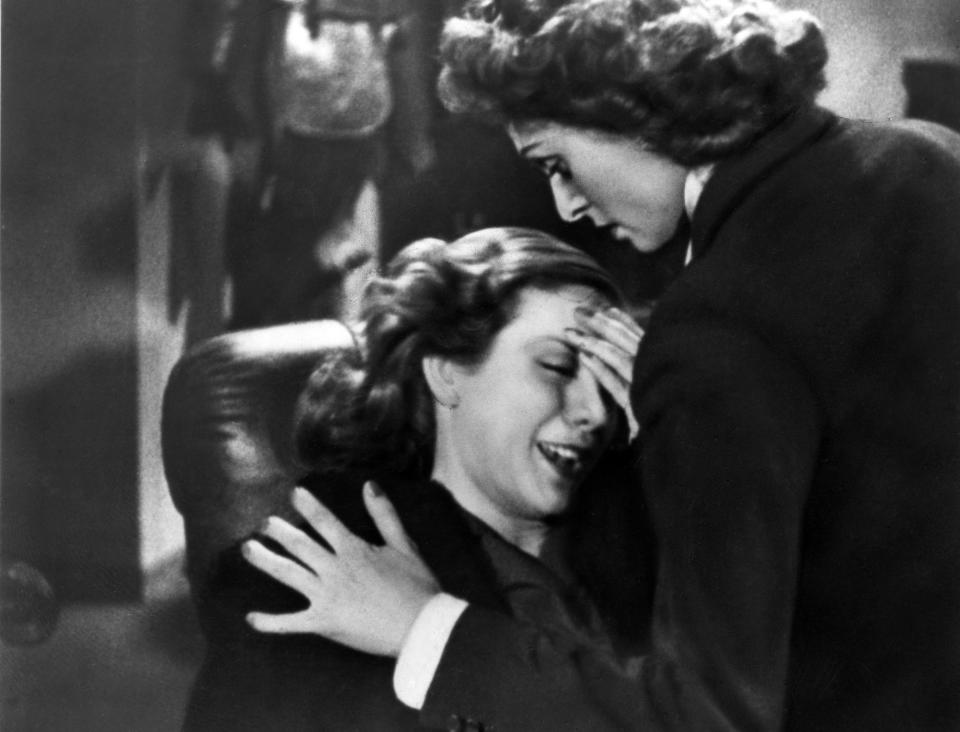
A masterpiece of Italian neorealism, “Rome, Open City” is the first of a neorealist trilogy by director Roberto Rossellini. Released in 1945, the film follows an Italian Resistance fighter who escapes occupied Rome during WWII with the help of a Catholic priest. It originally received a tepid reaction from Italians who wanted escapism after the war, but soon gained international acclaim for its melodrama and the acting of Anna Magnani. The film went on to win the Palme d’Or at the 1946 Cannes Film Festival and earned an Oscar nomination for its screenplay. — Jordan Moreau
The Deer Hunter (1978)
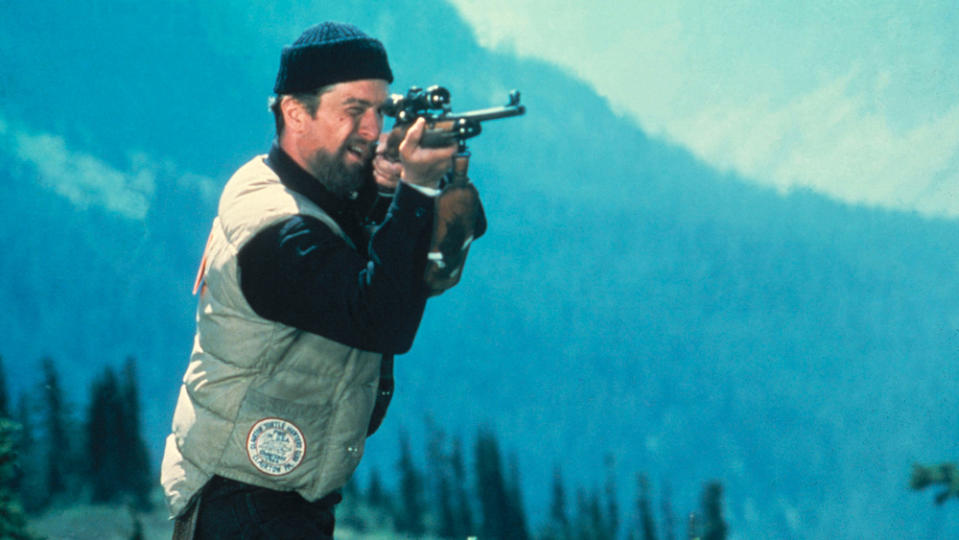
Structured like a sprawling literary novel, Michael Cimino’s “The Deer Hunter” is an emotionally overwhelming epic about the devastating psychological effects that warfare had on the American soldiers who fought in Vietnam. But it’s also an evocative portrait of life, love, and loss in a tight-knit Pennsylvania steel mill town, and the way Cimino brilliantly balances those two distinct sides is what gives the film its unremitting power. Rather than depict familiar scenes of combat and heroism, “The Deer Hunter” compresses all the horrors of war down to a single, harrowing 30-minute POW sequence set in a bamboo cage on the River Kwai, and the result is unforgettable. Released the same year as Hal Ashby’s sensitive and romantic war drama “Coming Home,” Cimino’s shattering classic was nominated for nine Academy Awards, and won five, including best picture and best director. – Pat Saperstein
The Steel Helmet (1951)
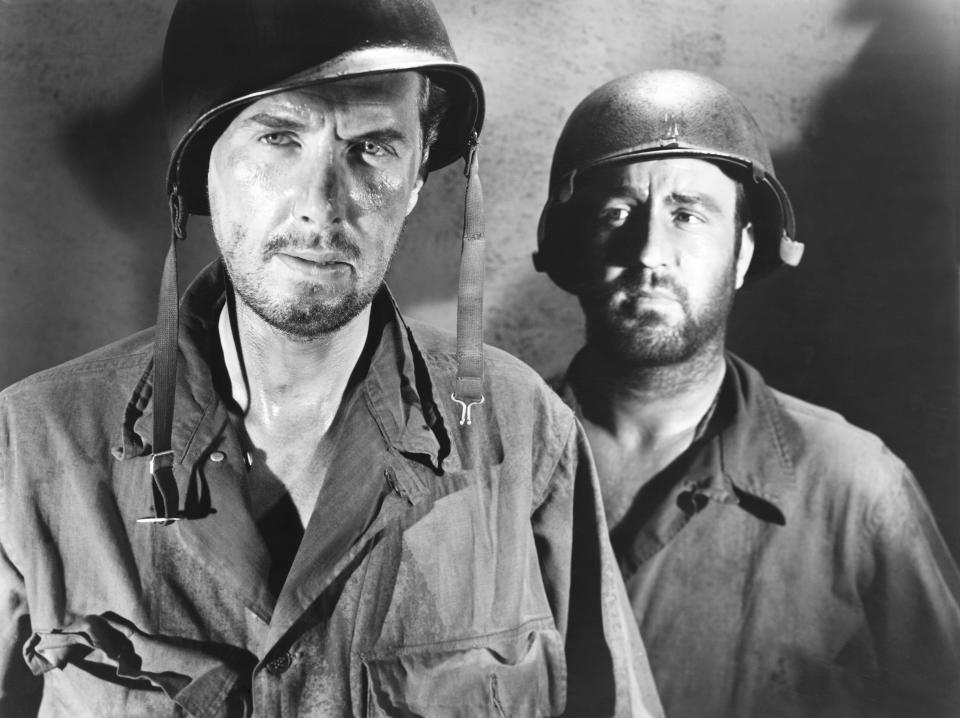
The first film released about the Korean War, “The Steel Helmet” is impressive enough just for its economy of filmmaking: Basing the story on his diaries from serving in WWII, director Samuel Fuller wrote the script in a week, shot the film in ten days for $200,000, and the movie was released just six months into the War. But unlike the glossy WWII pictures used to stir up enlistment, “Helmet” is a dour affair made for a nation tired of war. With danger lurking around every corner, there is nothing rousing about this picture, just the dogged determination of stranded soldiers to survive behind enemy lines. Despite the low budget, Fuller’s bold direction has made “Helmet” essential filmmaking at a time when the ideas of war were changing. — William Earl
Glory (1989)
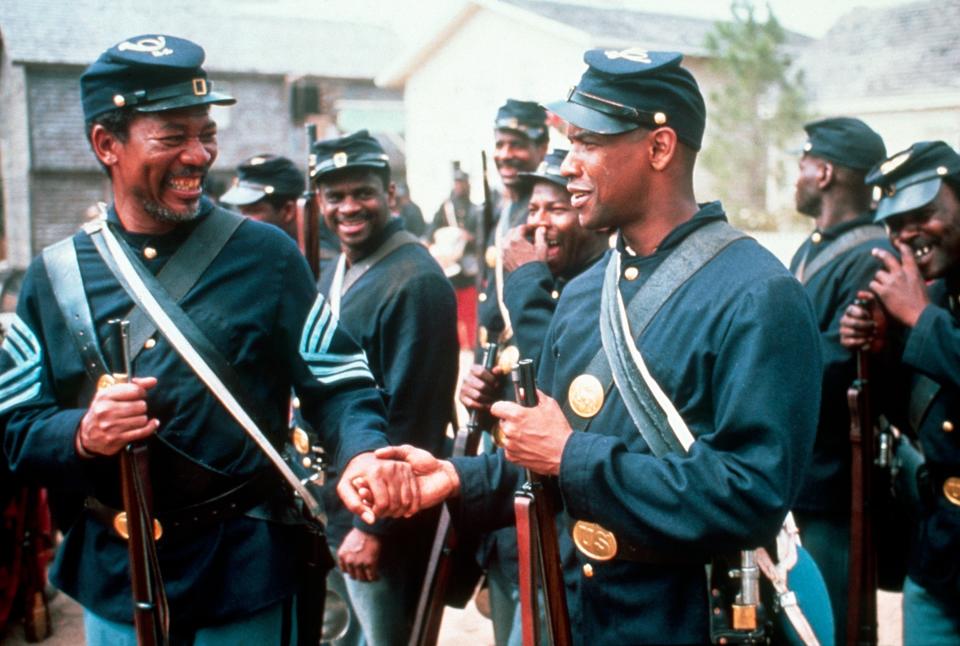
Matthew Broderick, Denzel Washington, Cary Elwes and Morgan Freeman star in this film about one of the first African-American regiments that fought for the Union in the Civil War. It follows the men of the 54th Massachusetts Infantry Regiment, from their fraught formation to their valiant fight at the disastrous Second Battle of Fort Wagner. The 1989 film won Washington his first-ever Oscar, in addition to trophies for cinematography and sound. For its unflinching depictions of the racist treatment toward Black soldiers and their mark on U.S. history, “Glory” is regarded as one of the best Civil War movies ever made. — Pat Saperstein
All Quiet on the Western Front (1930)
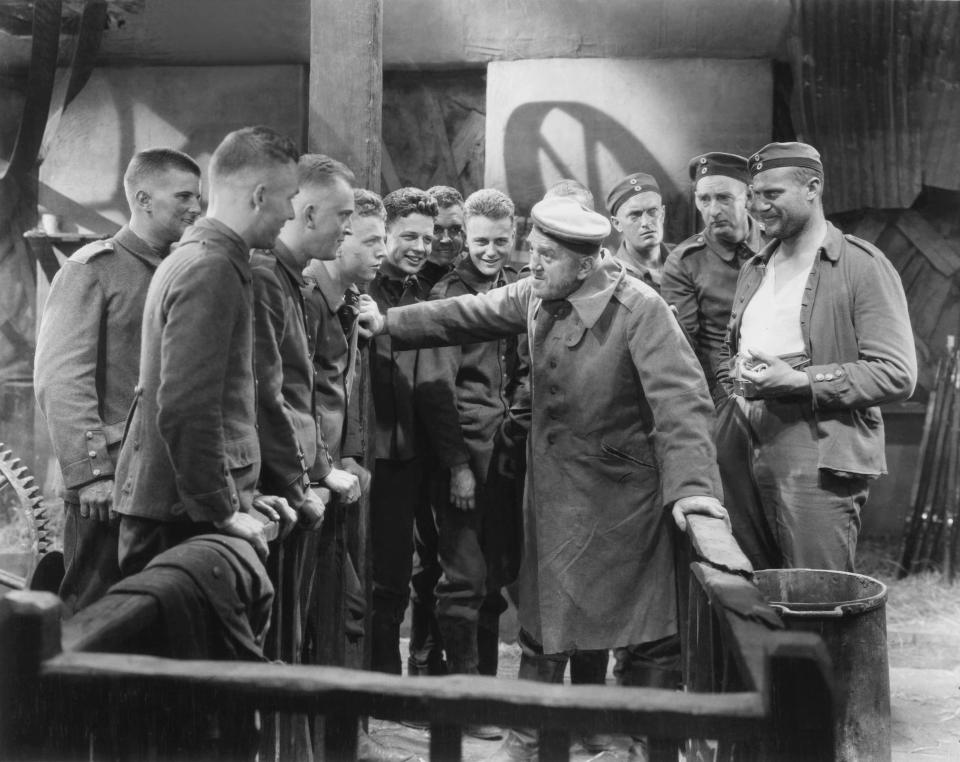
Adapted from Erich Maria Remarque’s 1928 novel (the same source material that inspired Edward Berger’s 2022 Oscar winner), Lewis Milestone’s “All Quiet on the Western Front” follows young German soldiers faced with the horrors of World War I. The film abandons any sort of romanticism in its depiction of war, instead showcasing the pointlessness, dehumanization and the brutal effect on the soldiers’ bodies and minds. With groundbreaking cinematography, sound and visual effects, “All Quiet” became a blueprint for war films as well as a powerful critique. —Ethan Shanfeld
Platoon (1986)
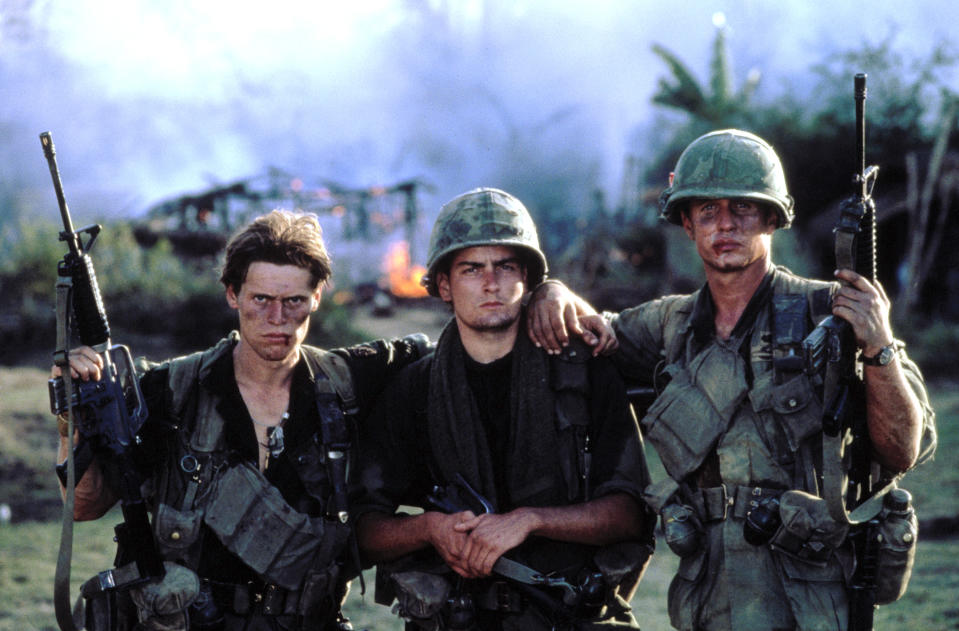
Oliver Stone drew on his own personal experiences as an American infantryman in Vietnam when he wrote and directed the autobiographical “Platoon,” a frighteningly immersive war film about a naïve young enlistee caught in a tragic three-way crossfire between two charismatic U.S. Sergeants and the Viet Cong army. Eschewing the arty surrealism of “Apocalypse Now,” the haunting symbolism of “The Deer Hunter,” and the dark satire of “Full Metal Jacket,” Stone’s vivid depiction of the day-to-day realities of warfare gives “Platoon” a you-are-there intensity that few other films can match. With the clear-eyed focus of a master documentarian, he brings every grueling detail to life, from the fetid stench and sweltering humidity of the jungle itself to the nightmarish shadows and the eerie silence that precedes a sudden enemy attack. A sizable hit at the box office, the film earned seven Academy Award nominations, and won four, including best picture and best director. — Pat Saperstein
Come and See (1985)
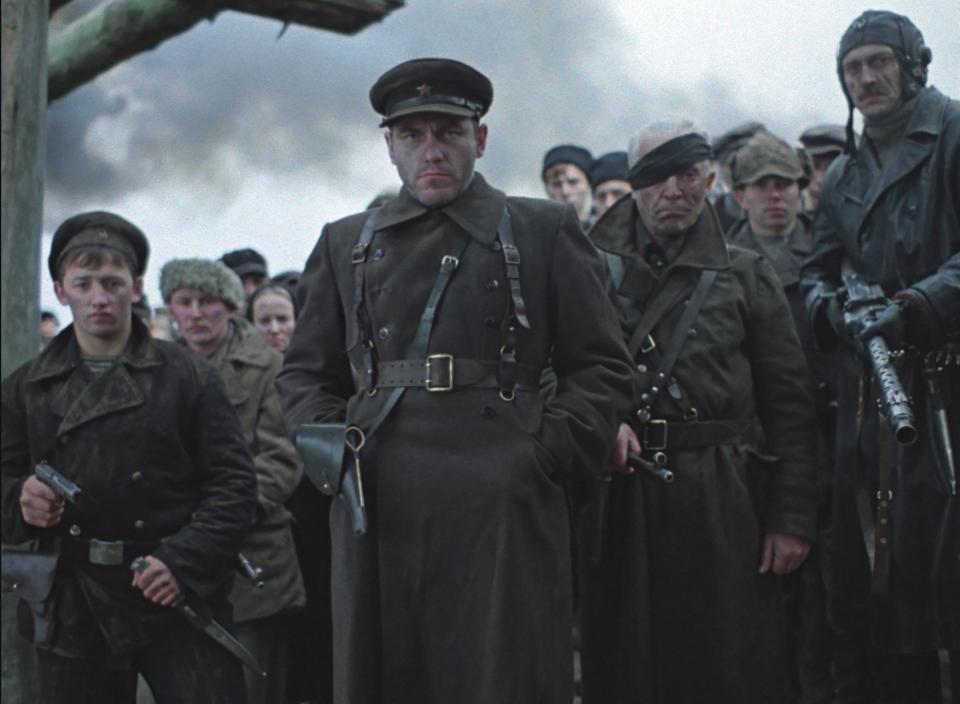
“I don’t think I’ve really seen an antiwar film. Every film about war ends up being pro-war,” François Truffaut claimed in 1973, and while he has a point — the sheer spectacle of combat films can’t help but glorify what they depict — that was a dozen years before Soviet director Elem Klimov found a new cinematic language for the horrors of war that would go on to influence everyone Terrence Malick (“The Thin Red Line”) to László Nemes (“Son of Saul”). Instead of emphasizing the carnage, the film focuses on the face of a 12-year-old Belarussian resistance fighter, shellshocked and desperate, as he stumbles through an overwhelming environment. At certain points, we catch details the boy is spared, like the fate of his family when he returns home. But the power lies in how deeply we identify with this character, for whom war truly is hell. — Peter Debruge
The Hurt Locker (2008)
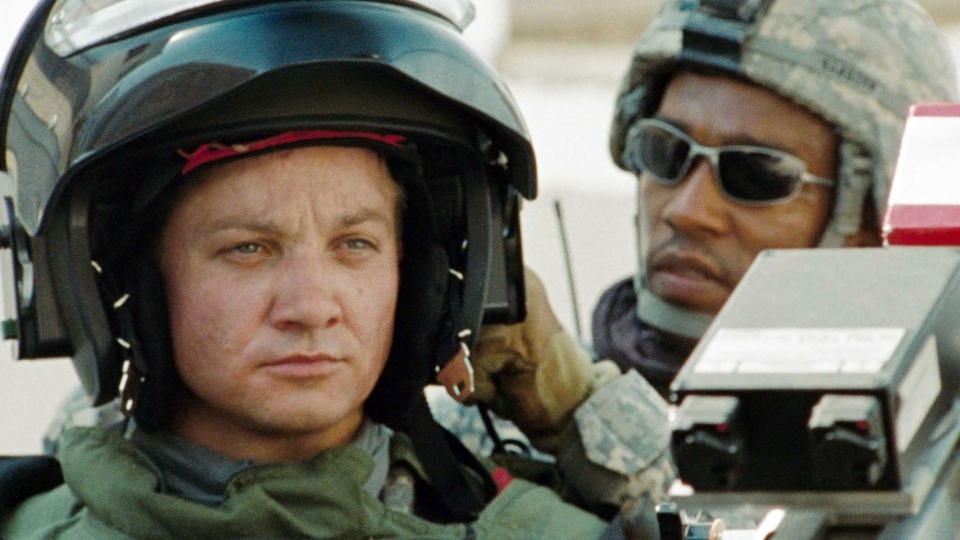
Delivering a complex and personal depiction of the Iraq War, 2008’s “The Hurt Locker” made history when its helmer, Katheryn Bigelow, became the first woman to win the best director Oscar. But the film’s accolades didn’t stop there: it also took home the Oscars for best picture, original screenplay, sound editing, sound mixing and film editing. Starring Jeremy Renner, Anthony Mackie, Brian Geraghty, Christian Camargo, Ralph Fiennes, David Morse and Guy Pearce, “The Hurt Locker” centers on a bomb disposal team and the mental, emotional and physical impacts of war. Screenwriter Mark Boal drew on his own experience covering the Iraq War as a journalist for the film’s script, giving it a nuanced and realistic feel, and Renner earned widespread acclaim for his haunting performance as Sergeant First Class William James. — Ellise Shafer
The Bridge on the River Kwai (1957)
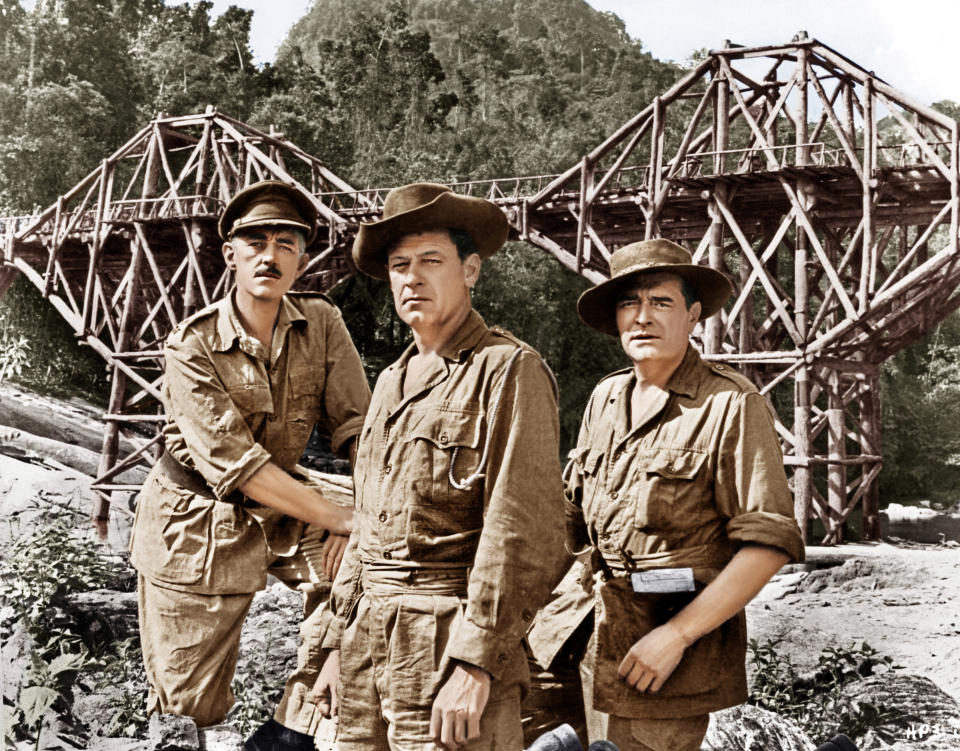
A captured troupe of British soldiers are forced to build a bridge for the Japanese army in this World War II epic. Lensed in CinemaScope, director David Lean uses the expansive frame to distance the viewer from its leads — an overtaxed Japanese commander, a high-minded British colonel and a pair of gruff American soldiers, one a scoundrel, the other a straight arrow. Each man fixates on the principles instilled by his nation so intensely that he can’t recognize that he’s slipping into madness. — J. Kim Murphy
The Battle of Algiers (1966)
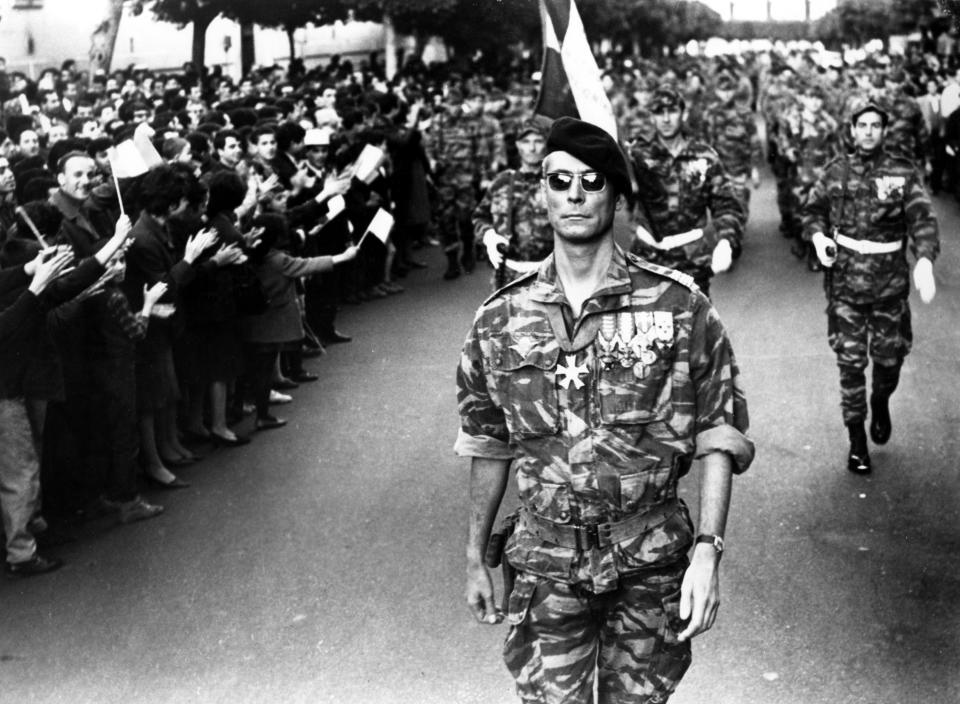
Shot not in studios, but in the actual cafes and casbahs of Algiers, Gillo Pontecorvo’s powder-keg depiction of National Liberation Front’s bloody struggle for independence from French control looks so convincing at times that its director was obliged to insist that “not one foot” of the film was taken from newsreels. Pitting heavily armed French soldiers against an underground network of resistance fighters — many of whom rely on terror tactics to oust the oppressor — Pontecorvo’s docu-style chronicle chillingly anticipated the gnarly direction war would take in the years ahead. No wonder the film’s raw, eyewitness aesthetic has been so influential, giving everyone from Alfonso Cuarón (“Children of Men”) to Christopher Nolan (“The Dark Knight Rises”) the example they needed to turn urban settings into white-knuckle battlegrounds. — Peter Debruge
The Best Years of Our Lives (1946)
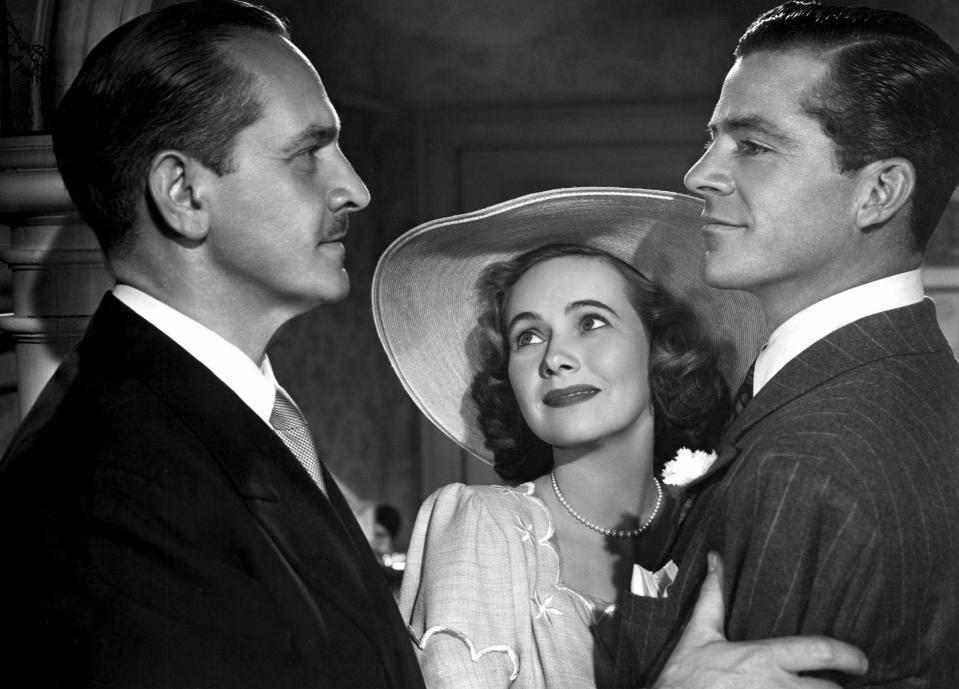
William Wyler’s 1946 drama was the first film to win eight Oscars – and it’s easy to see why, even if this affecting look at three veterans returning from WWII all takes place on the homefront rather than behind the battle lines. Hollywood leading men Frederic March and Dana Andrews co-star with Harold Russell, a novice actor who was actually disabled. The realistic casting was revolutionary at the time, and the nuanced look at how the men deal with integrating back into society and their relationships was far more subtle than most ‘40s films. Striking visuals from “Citizen Kane” cinematographer Gregg Toland add to the story’s impact. — Pat Saperstein
Schindler’s List (1993)
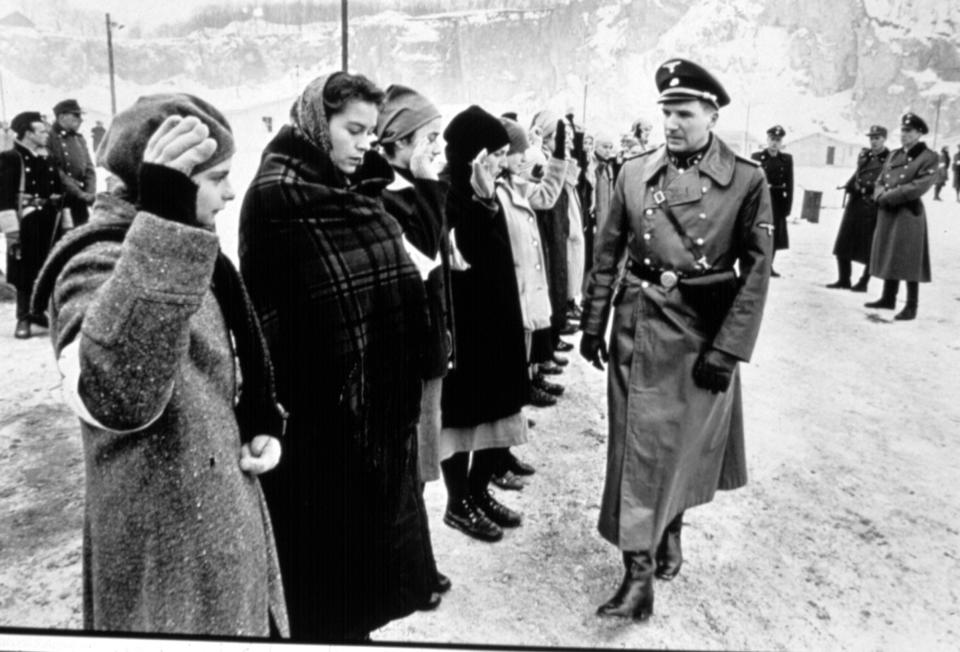
Shooting this sprawling tale of the Holocaust like a documentary, Steven Spielberg made one of the best films of his career without relying on any of the tools that amped up excitement in his blockbusters. Instead, this black and white powerhouse portrays the pain of the Jewish people and brutality of German soldiers in stark simplicity, needing no emotional manipulation because of how achingly brutal the struggle is. Spielberg doesn’t shy away from showing anything, and while the main story concerns a German war profiteer (Liam Neeson) working with a Jewish business leader (Ben Kingsley) to eventually save the lives of Jewish workers, it’s often the scenes of violence from the Nazis, including the chilling Amon Göth (Ralph Fiennes), that resonate long after the film stops rolling. The ending, particularly its use of color, remains a strong statement on the endurance of the Jewish people, and a fitting conclusion for a timeless movie. — William Earl
MASH (1970)
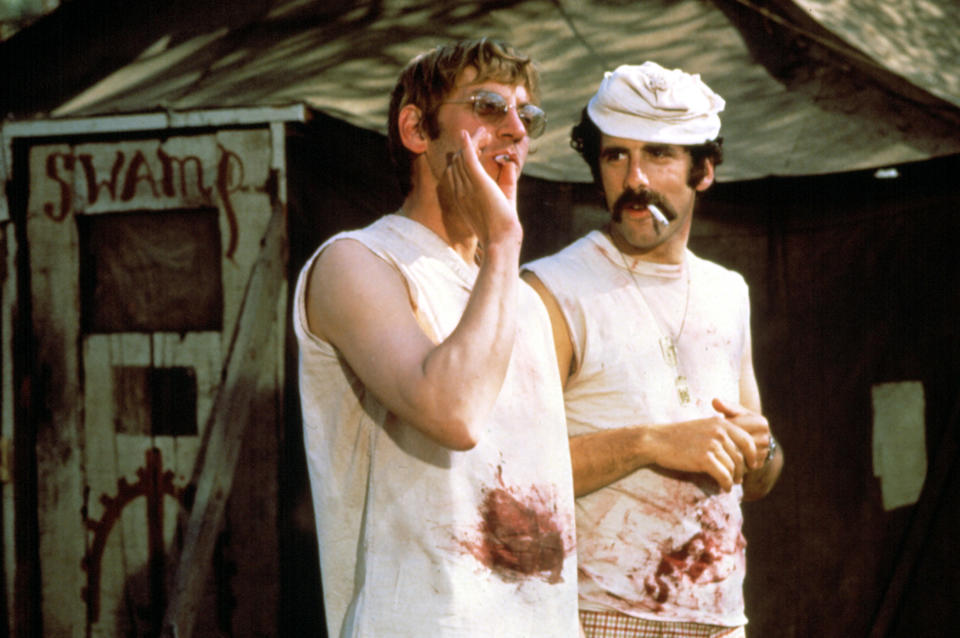
The movie that established Robert Altman as the visionary magician of the New Hollywood is a war comedy, but it’s a comedy so casually soaked in blood that it takes us closer to what war is than almost any other movie. Donald Sutherland and Elliott Gould, as hipster military physicians in the Korean War who wisecrack their way through every surgery (and every devious prank they play on the ”regular Army clowns”), are like Butch and Sundance living in triage, which the movie somehow turns into a satirical state of grace. — Owen Gleiberman
Paths of Glory (1957)
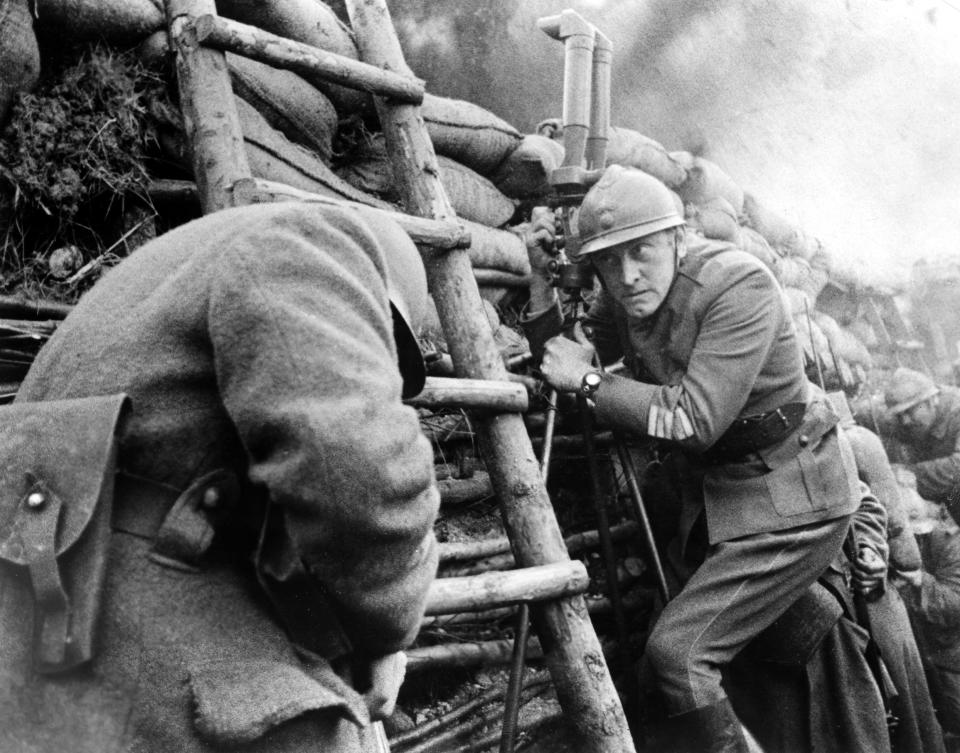
Unlike most of Stanley Kubrick’s films, his 1957 World War I thriller has a hero — a French officer (played by a very American Kirk Douglas) who defends three scapegoats sentenced to execution by their own government after their platoon fails to seize a territory. The story begins with the absurdity of men charging into oncoming bullets before moving into an even more preposterous kangaroo court, with military elites looking to earn a career boost by discplining their troops. Kubrick finds a nauseating humor in the despair, with the only sense of fairness coming with the promise that plenty more men will die meaninglessly before the war is through. — J. Kim Murphy
Apocalypse Now (1979)
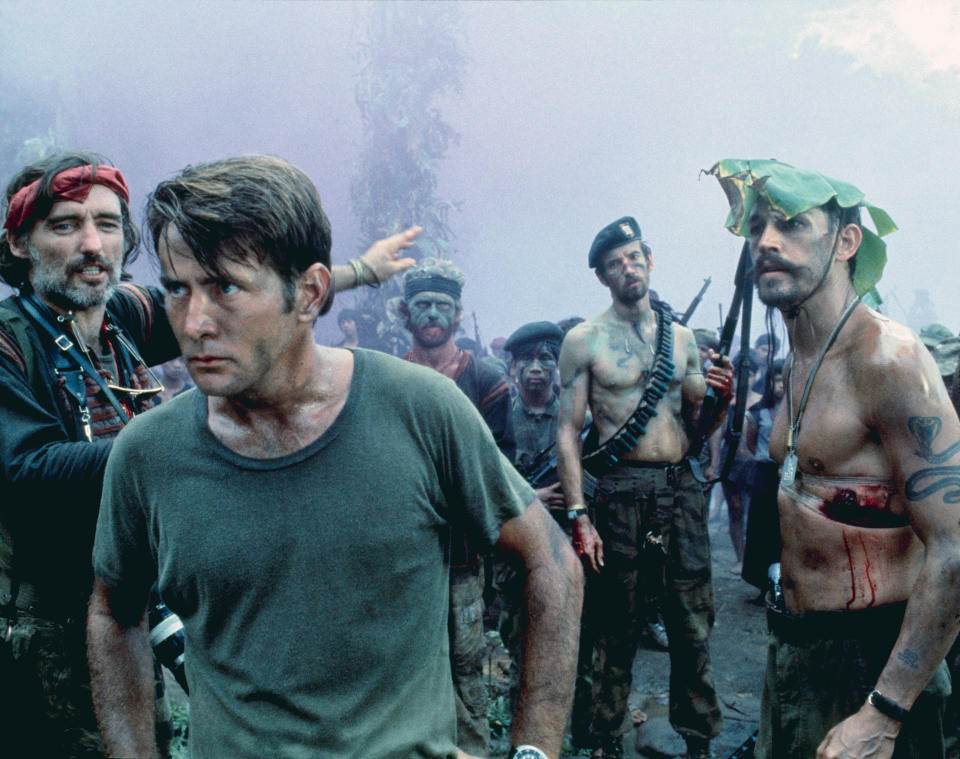
Francis Ford Coppola’s masterpiece “Apocalypse Now” is such a cultural institution that categorizing it just as a war movie seems reductive. Yes, it’s a “Heart of Darkness” adaptation updated to reflect Vietnam, but so much of the film’s power is wrapped up in the madness and obsession of making it. Pain and fury bleed through every scene, from the hypnotizing opening of destruction synced to The Doors’ “The End,” to the nightmarish air attack set to “Flight of the Valkyries,” to Marlon Brando’s chilling performance at the film’s end, bathed in shadow. Although the extraordinarily difficult shoot was nearly the end of Coppola, there’s a reason why this mesmerizing descent into chaos is one of the most important American films ever made. —William Earl
The Grand Illusion (1937)
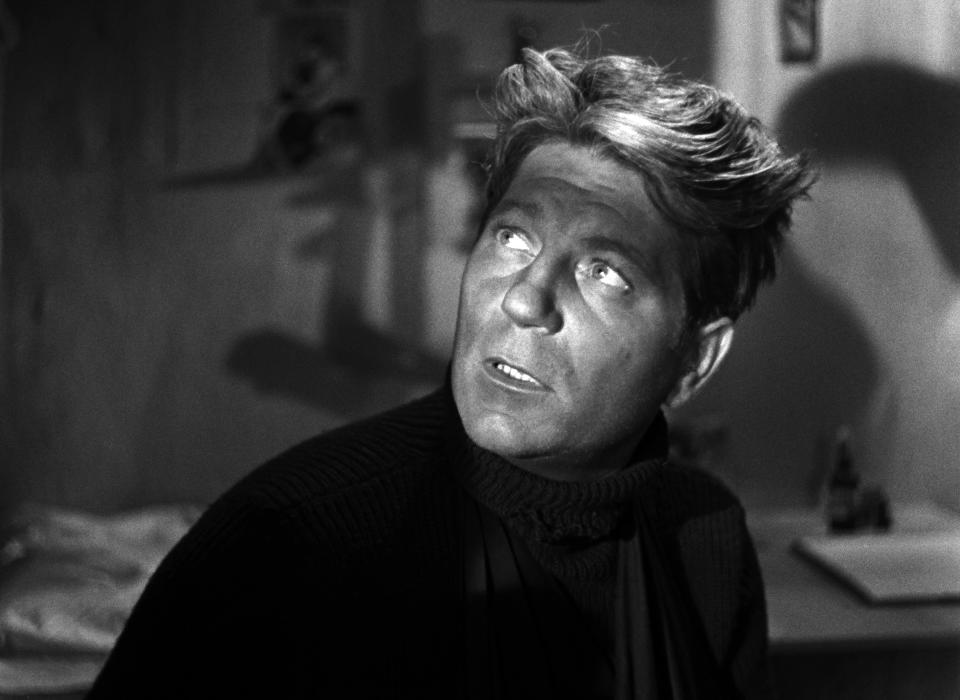
Asked by Dick Cavett which two films he’d save for posterity, Orson Welles replied, “‘Grand Illusion’ of Renoir and … something else.” Set not on the front lines, but in a series of prison camps, Jean Renoir’s great humanist drama reflects an unexpected civility during wartime, as seen in the famous scene between a captured French flying ace (Pierre Fresnay) and the gentleman German officer (Erich von Stroheim) who laments how the time of the aristocrats is over, no matter who wins the war. Sure enough, the film shows men of different beliefs and backgrounds thrust together, bonding as they never would have in peacetime. — Peter Debruge
Full Metal Jacket (1987)
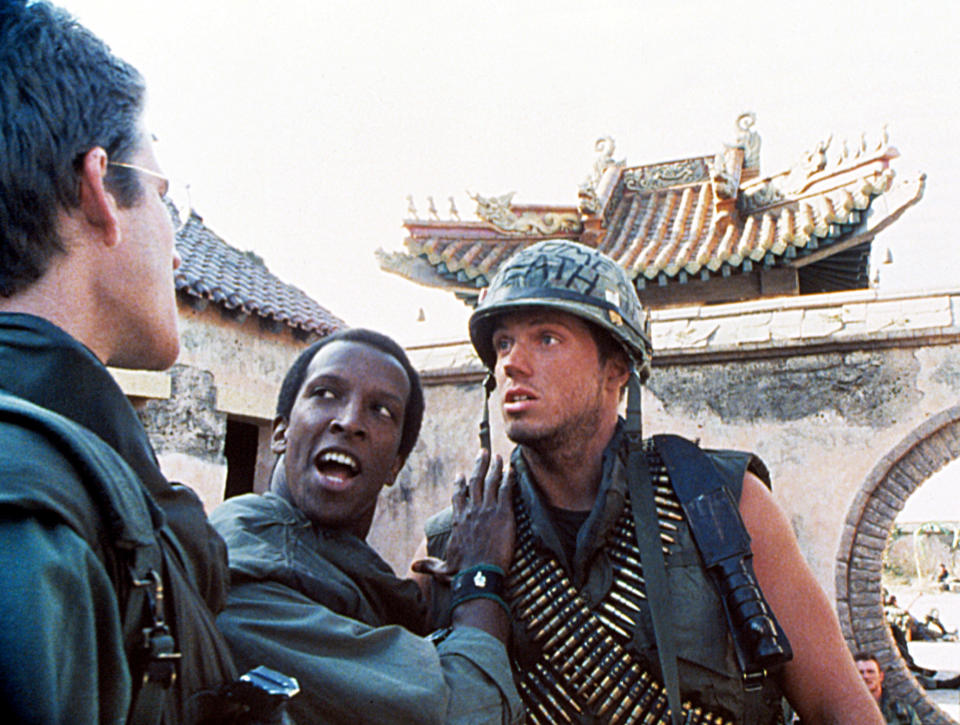
It’s one of Stanley Kubrick’s greatest films, yet it remains his most under-appreciated landmark. We all know that the basic-training sequence is a mesmerizing mini-movie, with R. Lee Ermy’s hilariously obscene drill sergeant transforming his Marine recruits into killing machines — and in the case of Private Pyle (Vincent D’Onofrio), doing so more than he bargained for. But “Full Metal Jacket” is also a movie that works like “2001: A Space Odyssey,’ drawing us into the combat experience as if it were a portal to another existence. In Vietnam, the film hits notes of irony and satire, but it’s just softening us for the kill. It’s disarming us with the “unreality” of war only to deliver us into war’s supreme reality, which culminates in the incomparable sniper sequence that we experience with full metal immersion. — Owen Gleiberman
Saving Private Ryan (1998)
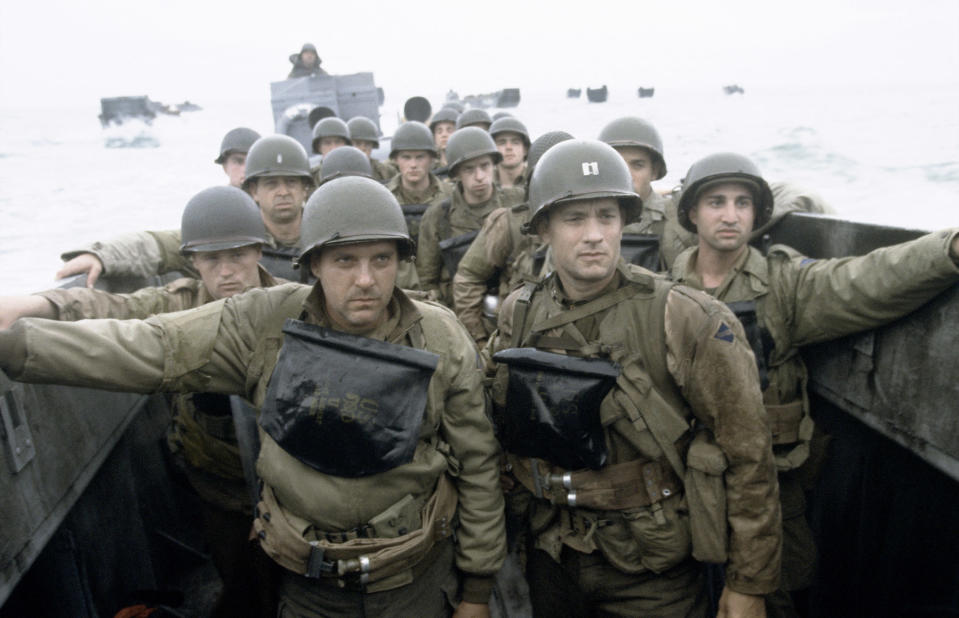
There’s no question that the 25-minute-long opening sequence, which depicts the D-Day invasion of Normandy Beach in all its bullet-spattering, flesh-tearing terror and horror, is the most cataclysmic sequence in any war film: a jagged vérité poem of fear that always felt unprecedented and remains unsurpassed, no matter how many times you’ve seen it. Yet if it were all just an anticlimax from there, Steven Spielberg’s World War II epic wouldn’t be the staggering masterpiece it is. The brilliance of the film, apart from the bone-deep humanity of its U.S. Army platoon (led by the stubborn bedraggled decency of Tom Hanks), is the way that Spielberg depicts the very spirit of war as a snake that keeps slithering back, sucking the men under, with annihilation lurking around every corner. The film’s virtuosic brutality and its mournful celebration of American heroism are symbiotic: In each scalding moment of combat, “Saving Private Ryan” takes the measure of ordinary men plunging into an inferno to save civilization. — Owen Gleiberman
Best of Variety

